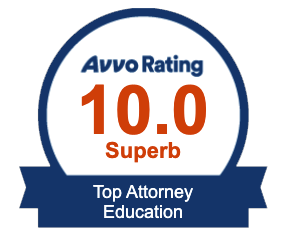In the past posts, I have tried to summarize why transition services and plans are critical for your child with a disability. An transition plan should be developed no later than age 14, but it can be developed earlier. You should be thinking about your child’s future as far in advance as possible. It is never too early to starting planning for transition from high school to post secondary activities. Whether your child plans to attend a college or university or plans to enter the job market after high school and live in structured and supervised setting, transition planning is critical to insure your child’s goals are met and satisfied. Too often, school systems and parents do not come to a meeting of the minds so to speak about transition planning and services. When the child is ready to graduate from high school, the parent is faced with little or no services, activities or plans when they are ready to graduate high school. Your child’s IEP for the last year or two should primarily focus on transition services and planning. If not, it probably will be too late to coordinate all elements of a transition plan before your child graduates. Transiting planning is a process. It is not an event. The more time you and the school system take in preparing your child for transition after graduation the outcome of that process is more likely to be smoother, effective, efficient and positive.
I mentioned in my last post that the Department of Vocational Rehabilitation is a key player in your child’s transition planning in the event your child will not attend a college, university, technical school, or other program after graduation. In Georgia, Warm Springs is a state operated program that allows eligible students to live on campus and spent six months or more learning vocational skills, independent life skills, social skills, and other skills that are necessary for your child to live as independently as possible. You should mention Warm Springs as an option for your child at the IEP meeting when transition services and planning is discussed. Of course, not every child is eligible or should be considered for Warm Springs. You should contact Warm Spring directly and learn about its program at http://gvra.georgia.gov/warmsprings/vocational before the IEP meeting if possible. Most school systems will have a brochure about Warm Springs but do not rely just on this brochure for information about this program. There may be a person attending the IEP meeting who is knowledge about Warm Springs. You should ask as many questions as you need to understand whether your child fits the program at Warm Springs. Warm Springs program is described as follows:
“Programs are grounded in person centered techniques of assessment and program planning to support students in reaching their highest level possible in independent living and vocational skill development. Goal setting techniques are taught early in each student’s program that focus upon setting short term goals that lead to reaching long term goals. Students are taught to set SMART goals that are “specific, measurable, attainable, relevant and time bound”. Goals are discussed frequently and celebrated when realized to promote student accountability. Students are encouraged to talk about their goals and help each other reach targeted goals.
A unique model of Roosevelt Warm Springs (RWS) Discovery provides an alternative to or supplements traditional assessment services. This model focuses on the identification of three (3) simple, yet powerful, pieces of information unique to each student: 1) the Contributions they will bring to the workplace; 2) their unique Interests, and 3) the Conditions they will need for success. Every student is provided an opportunity to participate in RWS Discovery whether through a pre-admissions assessment or counselor facilitated RWS Discovery activities after admissions. The residential settings of our campuses allow RWS Discovery to take place in variety of areas in each student’s life.
RWS program philosophies support students in the development of self-determination and self-advocacy. Learning opportunities are offered through courses, student led progress meetings and participation in student organizations. Leadership is also emphasized as part of student development in a variety of campus opportunities and community activities. Our program philosophy serves as the foundation in the development of programs and services that prepare students for successful transition to competitive employment, independence and life-long citizenship.”
There is usually a waiting list to enter Warm Springs so the earlier you apply, the more likelihood your child will be ready to enter the program when he is ready to graduate high school or sooner. As I said, not all children meet the eligibility requirements for admission to Warm Springs. And not all children fit into the model of Warm Springs. It is an individualized decision that is based upon your child’s unique needs.
You should avoid enrolling your child after graduation into shelter workshop programs, if possible. Sheltered workshops exist in some counties in Georgia. The national developmental disability rights movement, in large part, wants to eliminate sheltered workshops. In some states, such as Vermont, sheltered workshops do not exist. One of the reasons is that sheltered workshops are segregated. In other words, young adults work in a center or building with only others who have developmental and/or intellectual disabilities. They have no interaction with nondisabled peers. The young adults are only offered unskilled labor jobs at sheltered workshops. They are paid at subminimum wages. It has been said ” [W]hen individuals with disabilities spend years— indeed, decades—in congregate programs doing so-called jobs like these, yet do not learn any real vocational skills, we should not lightly conclude that it is the disability that is the problem. Rather, the programs’ failure to teach any significant, job-market-relevant skills leaves their clients stuck. As a recent review of the literature concludes, “[t]he ineffectiveness of sheltered workshops for helping individuals progress to competitive employment is well established.”[5] “Bagenstos, Samuel R., ‘Olmstead Goes to Work,’ Remarks as Prepared for Delivery at Case Western Reserve University School of Law, March 15, 2011 There are some, however, who would take umbrage with this statement and believe sheltered workshops have a place in society for young adults with disabilities. If you are faced a proposal that you child enter a sheltered workshop upon graduation or sooner, then you should read the literature and check it out for yourself.
There is so much more to discuss about transition services and planning. Therefore, you will to wait until my next post to find out more.

